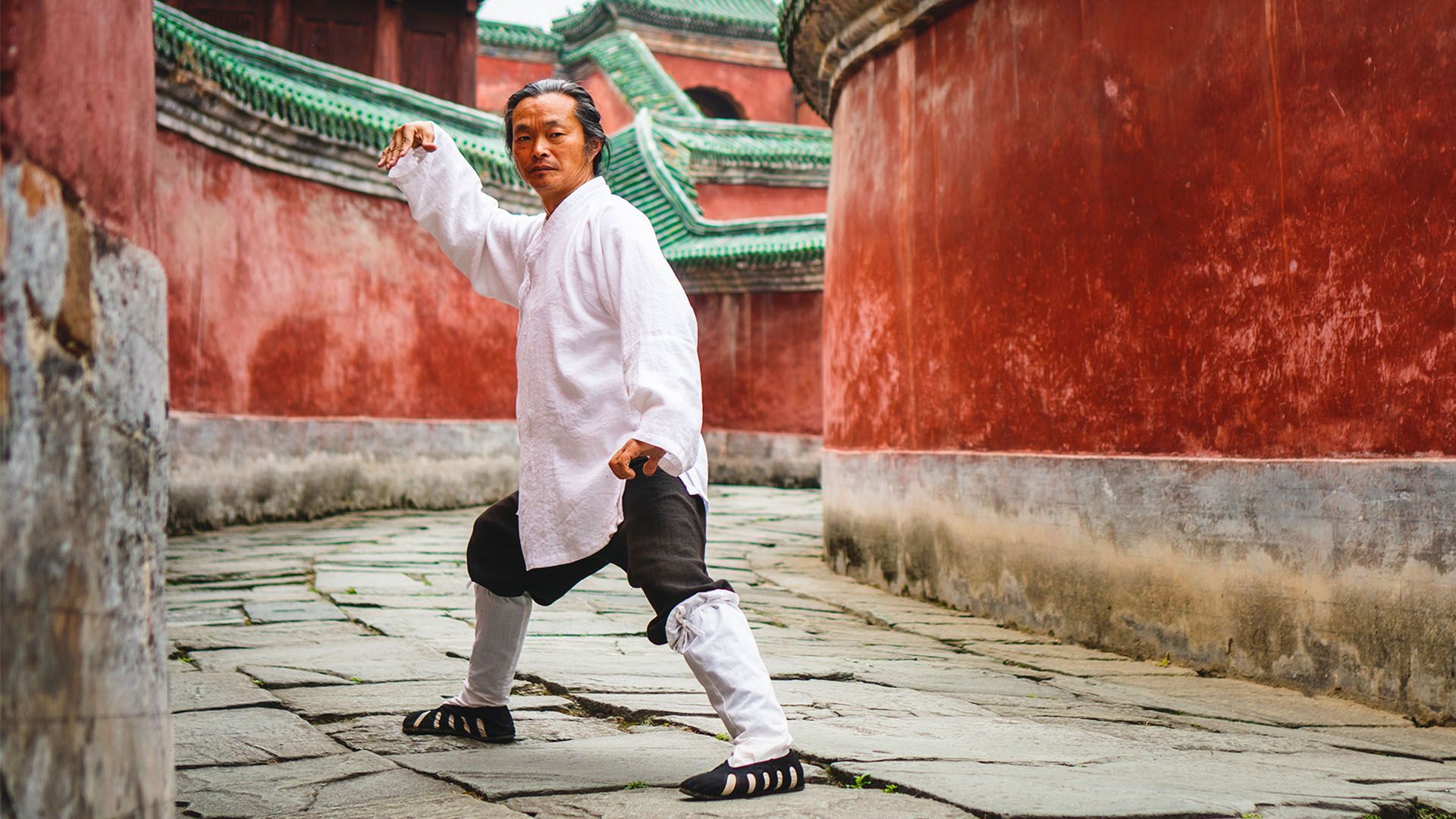How to Harness Chi Energy? The Best Techniques
Dec 12, 2023
"Imagine tapping into an invisible force that powers your life." This is the essence of Chi, a concept rooted in ancient Eastern philosophies. Chi, or Qi, represents the vital life force that flows through all living things. Learning how to harness Chi energy is about understanding and balancing this inner power to enhance physical, mental, and spiritual well-being. It involves practices like meditation, Tai Chi, and mindful breathing, which have been revered for centuries for their healing properties. These practices not only improve physical health but also promote emotional balance and mental clarity. This journey towards mastering Chi energy is transformative, leading to a deeper connection with the self and the surrounding world. Embracing the art of how to harness Chi energy opens the door to a harmonious and enriched life.
Take advantage of our Tai Chi Online Classes at Taoist Wellness Academy, led by the renowned Master Gu. Balance your energy and achieve holistic wellness. Enroll today and start your path to harmonious health!
Table of Contents
Introduction to Chi Energy
Chi, or Qi, is the vital life force energy that flows freely within every living being, beyond the physical. Rooted in Traditional Chinese Medicine (TCM), the concept of Chi intertwines with practices like acupuncture, aiming to balance this energy for health and wellness. Chi is thought to be a form of pure energy, influencing our physical body, mental stimulation, and overall healthy state. Recognizing and nurturing the free flow of Chi through techniques such as mindfulness and breathing allows for a harmonious energy field, which is essential for integrative health.
Understanding the Concept of Chi (Qi)
Chi in Different Cultures:
In Chinese culture, Chi, also known as 'Qi' or 'Ch'i,' symbolizes the vital life force that permeates all living beings. This concept, central to TCM, also resonates with 'Prana' in the yogic tradition, representing the universal energy that connects us. Different practices, like Tai Chi, Reiki, and Feng Shui, emphasize harnessing and directing this energy flow to maintain balance and harmony. Across cultures, Chi is recognized as the energy that flows through energy pathways, or meridians, with its balance or imbalance impacting one's overall well-being. Balancing Chi involves ensuring it flows freely, a principle deeply embedded in various healing arts and sciences worldwide.
Modern Interpretations of Chi:
-
In the realm of integrative health, Chi is recognized as the energy that flows beyond the physical, connecting us with universal energy. This view aligns with practices like Reiki and yoga, where the free flow of Chi, or Prana, is essential for wellness.
-
Energy training disciplines, such as Tai Chi and Qigong, emphasize the cultivation of Chi. These practices focus on harnessing this life force or energy through controlled movements, promoting the flow of Qi, and fostering a strong energy field within and around the body.
-
The concept of Chi transcends the boundaries of TCM, influencing various aspects of life, from Feng Shui in creating harmonious living spaces to mindfulness techniques aimed at balancing your Chi energy. These practices acknowledge that when Chi flows freely and the energy pathways are clear, individuals experience enhanced health and wellness.
The Science Behind Chi Energy

Chi is often discussed in the realms of metaphysics and spiritual practices, yet its scientific basis remains a topic of debate. While mainstream science has yet to fully acknowledge Chi as a quantifiable entity, various forms of alternative medicine that involve Chi, such as acupuncture, have gained some recognition for their therapeutic effects. Research in these areas often focuses on subjective experiences of well-being and pain relief rather than directly measuring Chi. This ongoing exploration represents a fascinating intersection of ancient traditions and modern scientific inquiry, potentially offering new insights into the nature of health and healing.
How to Balance Your Chi Energy?
Chi, or Qi, represents the flow of life energy, vital to health and wellness in Chinese culture. Rooted in Traditional Chinese Medicine, balancing Chi involves aligning the body's energy pathways, ensuring energy flows freely. This balance is crucial; when Chi is balanced, it contributes to a healthy state, but when imbalanced, it can cause blockages, affecting overall well-being.
To balance your Chi:
- Practice mindfulness and breathing techniques to harmonize your body's energy.
- Engage in Tai Chi or Qi Gong, connecting physical movements with the flow of Chi energy.
- Regular acupuncture sessions can unblock and guide Chi through specific pathways.
Restoring balance involves more than just physical practices; it's about nurturing a harmonious relationship between your environment and inner energy. Ensure enough sleep, avoid environmental toxins like polluted air, and embrace practices like yoga for a comprehensive approach to maintaining a healthy Chi flow.
Benefits of Harnessing Chi Energy
- Enhanced Physical Health: Regular Chi practices like Qigong and Tai Chi can significantly improve physical health. They enhance cardiovascular strength, boost immunity, and increase overall energy levels. These exercises promote flexibility, balance, and muscle strength, contributing to a healthier body.
- Mental Clarity and Focus: Chi energy practices are known for their ability to clear the mind. They help reduce mental clutter, enhance focus, and improve cognitive functions. This leads to better decision-making skills and increased productivity.
- Stress Reduction: One of the most immediate benefits of working with Chi is the reduction of stress and anxiety. The meditative aspect of Chi practices helps calm the mind, leading to a more relaxed state of being.
- Emotional Balance: Harnessing Chi helps in balancing emotions. It aids in managing feelings like anger, sadness, or frustration, fostering a sense of emotional stability and well-being.
- Spiritual Growth: Many practitioners experience a deepened sense of spiritual connection through Chi. It can lead to heightened self-awareness and a greater understanding of one’s place in the universe.
- Improved Sleep Quality: Regular engagement with Chi energy can lead to better sleep patterns. The relaxation techniques inherent in Chi practices help in calming the mind and body, promoting restful and rejuvenating sleep.
Basic Techniques to Harness Chi Energy
Harnessing Chi energy, the life force permeating through all living things, involves practices that enhance physical, mental, and spiritual well-being. Here are key methods to effectively channel this vital energy:
- Breathing Exercises: The cornerstone of harnessing Chi is controlled, mindful breathing. Deep abdominal breathing, where you focus on slow, rhythmic inhalations and exhalations, helps in calming the mind and directing Chi. A simple technique involves inhaling deeply through the nose, allowing the abdomen to expand, and then exhaling slowly through the mouth. Practicing this for a few minutes daily can significantly enhance your ability to sense and control Chi.
- Meditation and Mindfulness: Meditation is another powerful tool. It involves sitting quietly, focusing on your breath, and observing your thoughts without judgment. This practice increases awareness of Chi's flow within the body. Mindfulness, on the other hand, is about being fully present in the moment. Whether you are eating, walking, or resting, being mindful enhances your connection with Chi.
- Physical Movements (Tai Chi, Qigong): Tai Chi and Qigong are ancient Chinese practices that combine slow, deliberate movements with deep breathing. These exercises are not only gentle on the body but also effective in cultivating and balancing Chi. For beginners, Tai Chi's simple forms or Qigong's repetitive movements offer an accessible way to start. Engaging in these practices regularly can lead to significant improvements in both physical health and mental clarity.
Each of these techniques serves as a gateway to understanding and utilizing Chi energy, offering numerous benefits when practiced consistently. Remember, the key to harnessing Chi lies in regular, mindful practice, integrating these techniques into your daily routine for optimal results.
Advanced Techniques for Chi Manipulation
Visualization Techniques:
Visualization is a powerful tool for manipulating Chi. This technique involves mentally picturing the flow of Chi within the body to direct and enhance its energy. Practitioners often visualize Chi as a bright light or a flowing stream, moving smoothly through their body. This mental imagery not only aids in relaxation but also helps in focusing and intensifying the Chi. Key benefits include:
- Enhanced Focus: Sharpening mental clarity and concentration.
- Improved Control: Gaining better control over the flow and distribution of Chi.
- Stress Reduction: Easing mental and physical stress through calming imagery.
Visualization is often used in combination with breathing exercises and meditation for maximum effect.
Energy Healing Practices:
Energy healing, a practice rooted in the manipulation of Chi, involves transferring energy from the healer to the patient to restore balance and health. Techniques like Reiki, Qigong healing, and therapeutic touch are popular forms. Practitioners believe that this energy transfer can aid in healing physical, emotional, and spiritual ailments. Key characteristics include:
- Non-Invasive: These practices are gentle and non-invasive.
- Holistic Approach: Addressing not just physical symptoms but also emotional and spiritual well-being.
- Balance Restoration: Aiming to restore the balance of Chi in the body.
Energy healing is often sought for conditions that are stress-related or psychosomatic.
Martial Arts Integration:
In martial arts, Chi is harnessed to enhance physical abilities, increase strength, and improve mental focus. Styles like Tai Chi, Aikido, and Kung Fu incorporate Chi manipulation as a core principle. Practitioners learn to channel their Chi to achieve feats of strength, agility, and endurance that seem beyond ordinary capabilities. Essential principles include:
- Alignment and Posture: Proper body alignment is needed for optimal Chi flow.
- Breath Control: Using breath to guide and amplify Chi.
- Mental Discipline: Fostering a focused and disciplined mind to control Chi.
Integrating Chi in martial arts is not just about physical prowess; it also involves cultivating a deep sense of harmony and balance.
Integrating Chi Energy into Daily Life

Lifestyle Changes:
Incorporating Chi energy into your daily life involves adopting lifestyle changes that promote balance and well-being. It's about creating harmony in your daily routine, aligning your activities with natural rhythms, and making conscious choices that support the flow of Chi. These changes can include:
- Setting regular sleep patterns to ensure adequate rest.
- Incorporating moments of stillness and mindfulness throughout your day.
- Engaging in activities that nurture your physical, emotional, and spiritual health.
- Creating a living and working environment that fosters positive energy and reduces stress.
- Balancing work, leisure, and social interactions for holistic well-being.
Diet and Nutrition:
The food we consume plays a crucial role in balancing Chi energy. A diet that supports Chi is typically rich in natural, unprocessed foods that are high in vitality. Here are some guidelines:
- Include a variety of fruits and vegetables for their energy and nutrients.
- Opt for whole grains and lean proteins to maintain energy levels.
- Stay hydrated with water and herbal teas to aid in the flow of Chi.
- Minimize the intake of processed, sugary, and fatty foods.
- Eating mindfully and with gratitude enhances the Chi energy in your food.
Routine Practices:
Regular practices that cultivate and manage Chi are essential. These routines don’t need to be time-consuming; even short, consistent practices can be effective. Here are some key activities:
- Starting or ending your day with a few minutes of deep breathing or meditation.
- Incorporating gentle exercises like Tai Chi or Qigong into your daily routine.
- Practicing mindfulness in everyday tasks to stay connected with the present moment.
- Allocating time for activities that bring joy and relaxation, such as reading, gardening, or art.
- Regular self-reflection and journaling are necessary to maintain emotional and spiritual balance.
Conclusion
Harnessing Chi energy is an enlightening journey toward achieving a harmonious balance between body, mind, and spirit. It requires patience, practice, and a deep connection with one's inner self. By integrating Chi practices into daily life, we unlock a world of potential for health, happiness, and spiritual growth. As we continue to explore and understand this ancient wisdom, we find ourselves more aligned with the natural rhythms of life. Ready to balance your energy and achieve comprehensive wellness? Our Tai Chi Courses at Taoist Wellness Academy, taught by the esteemed Master Gu, await you. Enroll now and begin your journey to harmonious health!
FAQs
1. What is the first step in learning how to harness Chi energy?
The first step is to cultivate awareness of your body and breath, often through practices like meditation or mindful breathing.
2. Can practicing Tai Chi help in harnessing Chi energy?
Yes, Tai Chi is a powerful method for harnessing Chi energy, as it combines slow, deliberate movements with deep breathing.
3. How does meditation contribute to harnessing Chi energy?
Meditation helps in focusing and directing Chi's energy, leading to better mental clarity and emotional balance.
4. Are there any dietary recommendations for enhancing Chi's energy?
A balanced diet rich in natural, whole foods is believed to enhance the flow and quality of Chi energy in the body.
5. How long does it take to see the effects of Chi energy practices?
The effects vary per individual, but with consistent practice, most people begin to notice changes within a few weeks to months.







